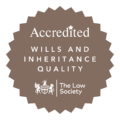February marks LGBT+ history month, and Shirin Muman, a paralegal at B P Collins, reflects upon the development of the legal rights of the LGBTQIA+ community (“the Community”). With UK laws initially being based on religious morals, Shirin believes society has come a long way with progressing LGBTQIA+ rights; however, there is still more work to do.
Brief history of LGBTQIA+ laws:
Male homosexuality was first ‘legally’ targeted during Henry VIII’s reign, by the passing of the Buggery Act 1533. For the first time in the UK, sodomy was punishable by death. This remained the position until 1861 with the passing of the Offences Against the Person Act, whereby the punishment was reduced to a minimum of 10 years imprisonment.
After many years of campaigning for the expansion of rights within the Community, the Sexual Offences Act 1967 decriminalised private homosexual acts in England and Wales between two men, who were over the age of 21. Although a major stepping stone, there was still much work to be done as homosexuality remained a criminal offence in Northern Ireland and Scotland.
The late 60s sparked a turning point in the fight for equal rights following the Stonewall Riots in June 1969. The UK Gay Liberation Front was founded and fought for the rights of LGBT people against mainstream views prevalent at the time. The Gay Liberation Front led to the first Pride march in 1972, which brought the celebration of, and protest for, LGBT rights to the public eye.
As the acceptance and developments of LGBT rights snowballed in the UK, the Civil Partnership Act 2004 allowed same-sex couples to enter into legally-binding Civil Partnerships, which granted them the same rights as married couples. Subsequently, the Marriage (Same-Sex Couples) Act 2013 allowed same-sex couples in England and Wales to marry; however, this was not legalised in Scotland and Northern Ireland until 2014 and 2020 respectively.
From 2004, Trans rights began to develop with the Gender Recognition Act 2004; this allowed transgender people to legally change their gender via medical procedures and acquire a new birth certificate.
The Equality Act 2010 provided further protection from discrimination as a result of protected characteristics, including gender reassignment, marriage and civil partnership, and sexual orientation.
Current challenges to LGBTQIA+ rights
Although we have seen a steady progression in the Community’s rights, there is still more to do. In 1988, the Conservative Government under Margaret Thatcher introduced ‘Section 28’ which banned schools and local authorities from ‘promoting’ homosexuality. This prevented schools from educating and providing support for LGBTQIA+ students which, in turn, led to increased discrimination against the Community due to a lack of understanding or awareness. Section 28 was overturned in England and Wales in 2003, but the emotional impact of young people within the Community was harmful.
There have been challenges to the Community’s rights recently, such as petitions spreading to bring back Section 28, and the UK’s use of Section 35, which was used to stop the Gender Recognition (Scotland) Bill. The Bill sought to make it easier for individuals to apply to legally change the gender on their birth certificates, but the use of Section 35 prevented it from receiving Royal Assent.
Although there has been progression of the Community’s rights within the UK, this does not mean that we should stop raising our voices to spread awareness of LGBTQIA+ rights in society.
If you feel as though you have experienced discrimination on the workplace as a result of a protected characteristic, feel free to contact our experienced Employment team for advice via email at enquiries@bpcollins.co.uk or call 01753 889995.













